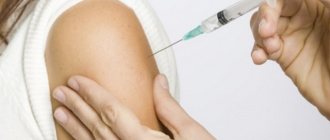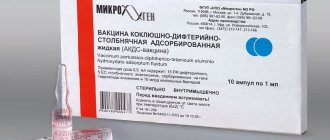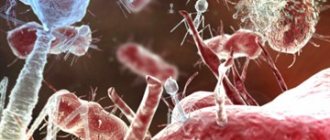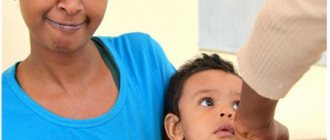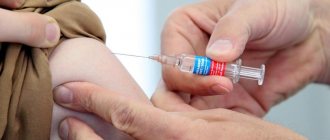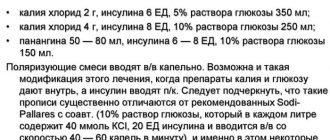Poliomyelitis is an acute viral disease that affects the central nervous system, primarily the spinal cord, and sometimes causes paralysis. The main method of spread is considered to be direct or indirect contact with the patient (through hands, handkerchiefs, clothing, etc.). Also spreads through food, water, and air.
What it is? Poliomyelitis is caused by polioviruses (poliovirus hominis) of the Picornaviridae family of the Enterovirus genus. There are three serotypes of the virus (type I predominates): I - Brunhilda (isolated from a sick monkey with the same nickname), II - Lansing (isolated in the town of Lansing) and III - Leon (isolated from a sick boy McLeon).
In some cases, the disease occurs in a mild or asymptomatic form. A person can be a carrier of the virus, releasing it into the external environment along with feces and nasal discharge, and still feel absolutely healthy. Meanwhile, susceptibility to polio is quite high, which is fraught with the rapid spread of the disease among the child population.
How is polio transmitted, and what is it?
Poliomyelitis (from the ancient Greek πολιός - gray and µυελός - spinal cord) is infantile spinal paralysis, an acute, highly contagious infectious disease caused by damage to the gray matter of the spinal cord by poliovirus and characterized mainly by pathology of the nervous system.
Mostly occurs in an asymptomatic or erased form. Sometimes it happens that poliovirus penetrates the central nervous system and multiplies in motor neurons, which leads to their death, irreversible paresis or paralysis of the muscles they innervate.
Infection occurs in several ways:
- Airborne transmission - occurs when air with viruses suspended in it is inhaled.
- Alimentary transmission - infection occurs through consumption of contaminated food.
- Contact-household way - possible when different people use the same utensils for eating.
- Water route – the virus enters the body with water.
Particularly dangerous in terms of infectious diseases are persons who suffer from diseases asymptomatically (in hardware form) or with nonspecific manifestations (slight fever, general weakness, increased fatigue, headache, nausea, vomiting) without signs of central nervous system damage. Such people can infect a large number of those in contact with them, because It is very difficult to diagnose sick people, and, therefore, these individuals are practically not subject to isolation.
Features of vaccination during an epidemic
Modern mothers often ask pediatricians whether a vaccinated child can get polio during an epidemic, and what consequences he faces. Every mother wants only health for her child.
Relatives and the state are jointly responsible for the emergence of an epidemiological situation. Doctors do not particularly conduct an explanatory policy, and parents, due to a lack of understanding of the severity of the disease, often refuse to vaccinate their children for prevention. In addition, the quality of the proposed vaccine is unknown.
Popular What is dangerous and how is closed form tuberculosis transmitted?
If your child is not vaccinated promptly, he or she may become infected with the polio virus and also put other children at risk of infection, since the disease can often be asymptomatic. What to do if an epidemiological situation arises? Let's consider the algorithm of correct actions:
1. First of all, the child must be given an inactivated vaccine, if it has not been given previously;
2. If the child has already been vaccinated, then during the epidemic, in order not to become infected with polio again, he is given a live oral vaccine in the form of drops. Vaccination is carried out three times with an interval of one month between each;
3. If vaccination is carried out for the first time, then it is necessary to administer the inactivated vaccine to the child two times in a row (with a one-month break between them). During this time, the body will have time to develop immunity to the live polio virus. The third vaccination is droplets.
Vaccination against polio
Specific prevention is vaccination against polio. There are 2 types of polio vaccines:
- Sebin live vaccine (OPV - contains live attenuated viruses)
- inactivated (IPV - contains polioviruses of all three serotypes killed by formaldehyde).
Currently, the only manufacturer of polio vaccine in Russia is the Federal State Unitary Enterprise “Enterprise for the production of bacterial and viral preparations of the Institute of Poliomyelitis and Viral Encephalitis named after. M.P. Chumakova produces only live polio vaccines.
Other drugs for vaccination are traditionally purchased abroad. However, in February 2015, the company presented the first samples of an inactivated vaccine of its own development. Its use is scheduled to begin in 2021.
Prevention of polio - how not to get infected
The release of effective vaccines to prevent paralytic polio was one of the greatest medical advances of the 20th century. As a result of the development and evaluation of the bivalent oral polio vaccine in 2009, the Global Polio Eradication Initiative now has an arsenal of 5 different vaccines to interrupt polio transmission: oral polio vaccine (OPV); monovalent oral polio vaccine (mOPV1 and mOPV3); bivalent oral polio vaccine (BOPV); inactivated polio vaccine (IPV).
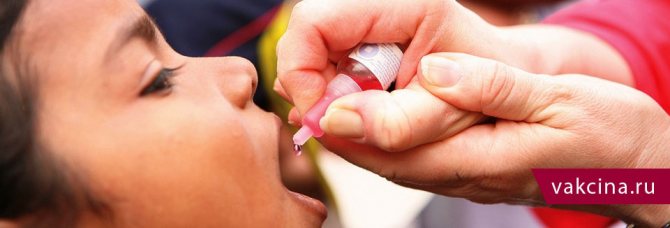
If enough people in any population are vaccinated, the virus will lose susceptible organisms and disappear. To stop transmission and prevent outbreaks, high levels of vaccination coverage must be maintained. The Global Polio Eradication Initiative is continually evaluating the optimal use of different vaccines to prevent paralytic polio and interrupt poliovirus transmission in different areas of the world.
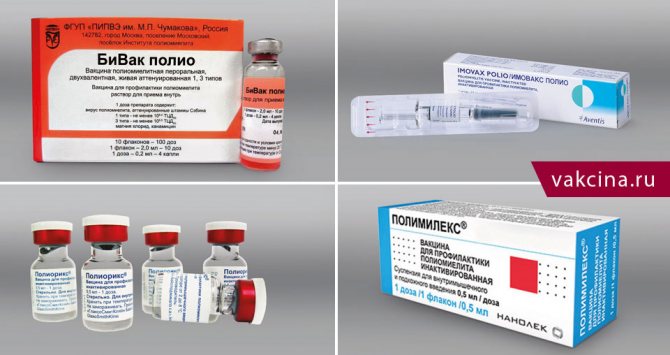
Specific prevention of polio has been developed using two vaccines - inactivated Solka and live Sebina. There are polyvalent vaccines (containing three types of virus I, II, III) and monovalent (containing only one type of virus). A live vaccine (for example, Bivak polio) is administered orally, an inactivated vaccine (for example, Polimilex, Poliorix, Imovax-polio) is administered subcutaneously or intramuscularly.

Among the vaccines against polio, the following combination vaccines are currently used: “Infanrix hexa” (Belgium) – polio, diphtheria, tetanus, whooping cough, hepatitis B, infections caused by Heamophilus influenza type b; “Pentaxim” (France) – polio, diphtheria, tetanus, whooping cough, infections caused by Heamophilus influenza type b; "Tetraxim" - polio, diphtheria, tetanus, whooping cough.
Polio vaccines
At the 68th World Health Assembly, the WHO global polio initiative announced the global withdrawal of the type 2 component of trivalent oral polio vaccine from April 2021. This initiative was supported by all participating countries, including the Russian Federation. Thus, the trivalent vaccine was replaced by a bivalent one. The remaining trivalent vaccines were discarded.
Vaccination of children to prevent polio is carried out at the ages of 2 months, 4.5 months, 6 months, 18 months, 20 months and 14 years.
Inactivated polio vaccine (hereinafter referred to as IPV) is used for the first two vaccinations, and if oral polio vaccine (hereinafter referred to as OPV) is contraindicated, for all subsequent vaccinations.
The OPV vaccine is used for the 3rd-6th vaccinations (vaccinations by age - 6 months, 18 months, 20 months and 14 years) in the absence of contraindications to OPS. The IPV vaccine can be used for the 3rd-6th vaccinations, either separately or as part of combined vaccines.
Children staying in closed preschool institutions (children's homes, orphanages, specialized boarding schools (for children with psychoneurological diseases, etc.), anti-tuberculosis sanitary and health institutions), closed children's institutions with HIV-infected people or with persons who are contraindicated OPS, vaccination is carried out exclusively with the IPV vaccine.
According to epidemiological indications, vaccination against polio is carried out to contact persons in foci of polio or if the disease is suspected:
- children from 3 to 18 years old - once;
- medical workers - once;
- children who arrived from disadvantaged countries (poliomyelitis endemic countries), from 3 months to 15 years - once (if there is reliable data on previous vaccinations) or three times (in their absence);
- persons without a fixed place of residence, from 3 months to 15 years - once (if there is reliable data on previous vaccinations) or three times (in their absence);
- persons who had contact with those arriving from endemic regions, from 3 months without age limit - once;
- persons working with live poliovirus, with materials infected (potentially infected) with wild poliovirus without age restrictions - once upon hiring.
Global poliovirus surveillance

Globally, under the supervision of the World Health Organization, active attention is being paid to polio surveillance. Global poliovirus surveillance is fundamental to achieving and maintaining polio eradication. Surveillance is vital to quickly detect all circulating poliovirus and inform eradication efforts. Surveillance for acute flaccid paralysis remains the primary mechanism for detecting poliovirus, with particular emphasis on endemic and high-risk countries. In addition, environmental surveillance has been further expanded as a complement to oral poliovirus vaccine surveillance to detect the presence of poliovirus in infected areas and populations. This facilitates faster identification of outbreaks in high-risk areas, provides additional information to confirm interruption of transmission, and eliminate vaccine-associated strains after cessation of oral polio vaccine use.
The Polio Strategic Plan 2013-2018 was approved, which is a comprehensive long-term strategy aimed at achieving a polio-free world by 2021. It was developed by the Global Polio Eradication Initiative in consultation with national health authorities, global health, scientific experts, donors and other stakeholders in response to a directive from the World Health Assembly.
This plan addresses the elimination of all cases of polio, regardless of whether it was caused by wild or vaccine poliovirus.
The plan has four goals:
- Detect and interrupt all types of poliovirus transmission.
- Strengthening the immunization system and introducing oral polio vaccine.
- Retain the isolated poliovirus, but ensure transmission is interrupted.
- Planning to prevent the consequences of polio.
The World Health Organization will report on this strategy soon, but everyone is aware of low vaccination coverage in some countries, which has prevented the supposed ideal targets from being achieved.
Vaccination is the most effective medical intervention ever invented by man.
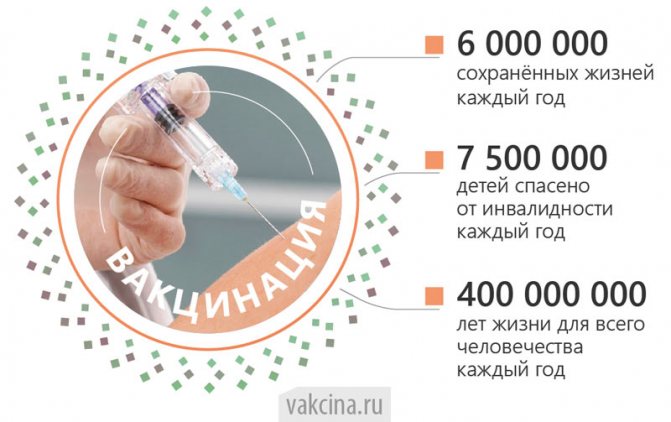
Used materials
- https://polioeradication.org/polio-today/polio-now/this-week/ - statistical data on polio cases in the world and in different countries.
- https://polioeradication.org/polio-today/polio-now/ - Polio and poliovirus cases resulting from vaccination - last 12 months - accessed April 17, 2018.
- https://www.who.int/mediacentre/news/releases/2017/polio-funding/ru/ - Global Polio Eradication Initiative.
- https://polioeradication.org/who-we-are/strategy/ - strategic plan for polio eradication.
- https://www.who.int/ru/news-room/fact-sheets/detail/%D0%BF%D0%BE%D0%BB%D0%B8%D0%BE%D0%BC%D0%B8 %D0%B5%D0%BB%D0%B8%D1%82 – key facts on polio, clinical data.
- https://www.who.int/ru/news-room/detail/22-05-2015-wha-reaches-agreement-on-polio-international-health-regulations-and-strengthening-surgical-care - 68th session World Health Assembly, decisions towards eradicating polio.
- https://www.rosminzdrav.ru/news/2014/12/05/2164-predstaviteli-minzdrava-rossii-vystupili-na-zasedanii-ekspertnogo-soveta-po-zdravoohraneniyu-komiteta-soveta-federatsii-po-sotsialnoy- politike-na-temu-modernizatsiya-natsionalnogo-kalendarya-profilakticheskih-privivok - vaccination calendar in the Russian Federation.
- https://rg.ru/2014/05/16/kalendar-dok.html - Order of the Ministry of Health of the Russian Federation (Ministry of Health of Russia) dated March 21, 2014 N 125n, Moscow “On approval of the national calendar of preventive vaccinations and the calendar of preventive vaccinations vaccinations according to epidemic indications.”
- Golubovskaya O. A. Infectious diseases. - M.: VSV "Medicine", 2012. - 728 p. + 12 s. color. on – historical data, symptoms and their pathogenetic features, treatment.
Author: Anastasia Lishnevskaya, infectious disease doctor Source: MMK Formed
Symptoms of polio
According to WHO, polio mainly affects children under 5 years of age. The incubation period lasts from 5 to 35 days, symptoms depend on the form of polio. According to statistics, most often the disease occurs without impairment of motor functions - for every one paralytic case there are ten non-paralytic ones. The initial form of the disease is the preparalytic form (non-paralytic poliomyelitis). It is characterized by the following symptoms:
- General malaise;
- Temperature increase up to 40°C;
- Decreased appetite;
- Nausea;
- Vomit;
- Muscle pain;
- Sore throat;
- Headache.
The listed symptoms gradually disappear within one to two weeks, but in some cases they can last longer. As a result of headache and fever, symptoms arise that indicate damage to the nervous system.
In this case, the patient becomes more irritable and restless, and emotional lability is observed (mood instability, constant change). Muscle rigidity (that is, numbness) also occurs in the back and neck, and Kernig-Brudzinski signs appear, indicating the active development of meningitis. In the future, the listed symptoms of the preparalytic form may develop into the paralytic form.
Complications caused by polio
The most common complications of polio include the following: pneumonia, pulmonary atelectasis, myocarditis, acute dilatation of the stomach, intestinal bleeding.
Treatment of polio
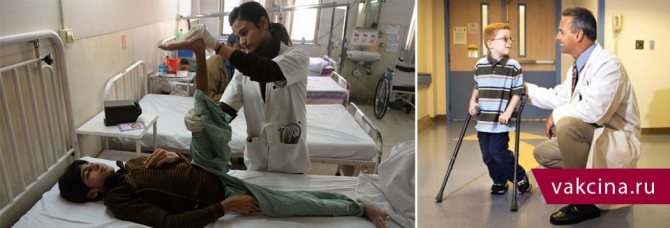
Patients with polio are subject to emergency hospitalization for at least 40 days in special boxes.
In the preparalytic and paralytic phases, the patient needs complete rest. The bed should have a firm mattress without a pillow, the legs should be extended and the feet should be fixed with a splint in a physiological position.
Specific treatment during the preparalytic period is the administration of immunoglobulin at the rate of 0.5 ml/kg body weight, as well as the administration of interferon and ribonuclease. For severe muscle pain, analgesics are prescribed. In case of swallowing disorders, it is necessary to insert a gastric tube; in case of respiratory disorders, artificial ventilation of the lungs is necessary.
During the recovery period, the patient should take drugs of group B, proserin, anabolic hormones, nootropic drugs, and also use physical therapy (paraffin, UHF), and use therapeutic exercises and massage to prevent contractures.
Abortive form of polio
With the abortive form of polio, sick children complain of an increase in body temperature to 38 °C. Against the background of temperature, the following is observed:
- malaise;
- weakness;
- lethargy;
- mild headache;
- cough;
- runny nose;
- abdominal pain;
- vomiting
In addition, redness of the throat, enterocolitis, gastroenteritis or catarrhal tonsillitis are observed as concomitant diagnoses. The duration of manifestation of these symptoms is about 3-7 days. Poliomyelitis in this form is characterized by pronounced intestinal toxicosis; in general, there is a significant similarity in manifestations with dysentery; the course of the disease can also be cholera-like.
Meningeal form of polio
This form is characterized by its own severity, while symptoms similar to the previous form are noted:
- temperature;
- general weakness;
- malaise;
- stomach ache;
- headaches of varying degrees of intensity;
- runny nose and cough;
- decreased appetite;
- vomit.
Upon examination, the throat is red, there may be plaque on the palatine arches and tonsils. This state lasts 2 days. Then the body temperature normalizes, catarrhal symptoms decrease, and the child looks healthy within 2-3 days. After this, the second period of increasing body temperature begins. Complaints become more distinct:
- sharp deterioration in condition;
- Strong headache;
- vomit;
- pain in the back and limbs, usually the legs.
An objective examination reveals symptoms characteristic of meningism (positive Kernig and Brudzinski signs, rigidity in the back and neck muscles). Improvement is achieved by the second week.
Spinal poliomyelitis
The most common form of the disease in young children is spinal poliomyelitis, caused by sluggishly developed atrophic paralysis of the respiratory muscles, lower extremities, and less commonly, arms. Paralysis in this form of polio is uneven and asymmetrical. It is dangerous when polio in a baby is reflected by pain in the neck and chest area, since the diaphragm is affected and the normal breathing rhythm is disrupted.
After the virus infects the body, paralysis may appear within a few days, and atrophy will occur within two weeks. The proximal parts of the extremities receive a stronger blow, in which tendon reflexes cease to be observed, muscle hypotonia and the presence of osteoporosis are revealed.
If within a week the body does not recover from the spinal form of polio, then there is no hope for further full recovery. The child will be severely delayed in growth.
Paralytic polio
It develops quite rarely, but, as a rule, leads to disruption of many body functions and, accordingly, to disability:
- Bulbarnaya. Particularly serious is the development of bulbar palsy. The entire group of caudal nerves is affected. Selective damage to one or two nerves is not typical for polio. If the reticular formation, respiratory and vascular centers are damaged, consciousness and respiratory disorders of central origin may be impaired.
- Pontina. This type of polio is characterized by the development of paresis and paralysis of the facial nerve, in which partial or complete loss of facial movements occurs.
- Encephalitic. The brain substance and subcortical nuclei are affected (very rarely). Central paresis, convulsive syndrome, aphasia, and hyperkinesis develop.
- Spinal. Weakness and muscle pain are gradually replaced by paralysis, both general and partial. Muscle damage in this form of polio can be symmetrical, but paralysis of individual muscle groups throughout the body occurs.
There are 4 periods during the course of the disease:
- preparalytic;
- paralytic;
- restorative;
- residual.
Classification
According to the clinical course, polio is divided into two forms: without damage to the central nervous system (viral carriage and abortive, i.e., mild disease). Based on severity, they are divided into mild, moderate and severe forms.
Poliomyelitis, which affects the central nervous system, is divided depending on its nature into the following types:
- Spinal poliomyelitis - high fever, flaccid paralysis of the limbs, neck, diaphragm, torso, muscle spasms, headaches, hypoxia and hypercapnia.
- Pontine - paralysis of the facial nerve with obvious asymmetry, inability to completely close the eyelids, loss of facial expressions and drooping of the corner of the mouth on one side of the face.
- Encephalitic - signs of brain damage, namely confusion, convulsions, coma. It occurs extremely rarely and can lead to autonomic dysfunction.
- Bulbar - disturbances in speech, swallowing, breathing, and cardiac function. With paralysis of the intercostal muscles and diaphragm, artificial ventilation is necessary. If cardiovascular failure occurs, the patient's risk of death is high

Mixed forms are often found, in which several parts of the nervous system are affected. These include bulbopontospinal, pontospinal and others.
Preparalytic stage
It is characterized by a rather acute onset, high body temperature, general malaise, headache, gastrointestinal disorders, rhinitis, pharyngitis. This clinical picture persists for 3 days, then the condition normalizes for 2-4 days. Afterwards there comes a sharp deterioration in the condition with the same symptoms, but more pronounced intensity. The following signs are included:
- pain in legs, arms, back;
- decreased reflexes;
- increased sensitivity;
- decreased muscle strength;
- convulsions;
- confusion;
- excessive sweating;
- spots on the skin;
- "goose pimples".
Paralytic stage
This is the stage when the patient suddenly suffers from paralysis (within a couple of hours). This stage lasts from 2-3 to 10-14 days. Patients during this period often die from severe respiratory and circulatory disorders. It has the following symptoms:
- flaccid paralysis;
- defecation disorders;
- decreased muscle tone;
- limitation or complete absence of active movements in the limbs and body;
- damage mainly to the muscles of the arms and legs, but the muscles of the neck and torso may also be affected;
- spontaneous muscle pain syndrome;
- damage to the medulla oblongata;
- urinary disorders;
- damage and paralysis of the diaphragm and respiratory muscles.
During the recovery period of polio, which lasts up to 1 year, tendon reflexes are gradually activated and movements in individual muscle groups are restored. The mosaic nature of the lesion and uneven recovery causes the development of atrophy and muscle contractures, growth retardation of the affected limb, the formation of osteoporosis and bone tissue atrophy.
The residual period, or the period of residual effects, is characterized by the presence of persistent paresis and paralysis, accompanied by muscle atrophy and trophic disorders, the development of contractures and deformation in the affected limbs and parts of the body.
Treatment options for polio
Unfortunately, there is no separate special way to cure polio, therefore, first of all, the patient is prescribed bed rest, symptomatic treatment aimed at reducing temperature, eliminating symptoms of fever, and pain relief. They strive to increase the level of comfort for the patient, speed up recovery, use mechanical ventilation if necessary, and then add feasible physical exercises (physiotherapeutic techniques, therapeutic exercises) to prevent deformation of the limbs and loss of muscle function.
With poliomyelitis, the death of nerve motor cells occurs, deviations in the function of the muscular system are observed, often accompanied by trophic and vascular disorders. The muscles of the lower extremities are most often affected.
Practice shows that the patient needs systematic restorative treatment aimed at eliminating pathological phenomena from the central nervous system and neuromuscular systems. In the treatment process, a combination of physical therapy is used - therapeutic exercises, physical exercises in water, walking, massage - with drug treatment and even surgery.
Exercise therapy for polio has an overall positive effect on the patient’s body and leads to the normalization of a number of vital functions, helps strengthen the affected muscles, and helps avoid the appearance of contractures and deformities of the limbs.
In addition, therapeutic physical education for existing disorders will help facilitate the patient’s development of mobility and self-care skills, and will contribute to the future physical development of the child.
An integrated approach to restoration consists of the following methods:
- Therapeutic exercise and massage aimed at improving tissue trophism and strengthening weakened muscles.
- Physiotherapeutic treatment: treatment with heat, paraffin baths, electrophoresis, magnetotherapy, electrical stimulation, darsonvalization, therapeutic swimming, hydromassage baths.
- Manual therapy
- Reflexology: acupuncture, laser therapy
A comprehensive examination and correct recovery methods after polio are carried out at the Center for Rehabilitation Medicine in Naberezhnye Chelny - the Center’s specialists will select the necessary ways to make life easier and prolong a comfortable life for a patient who has suffered polio.
Positive dynamics from physiotherapy, massages, and manual therapy are observed in all patients - these methods help build muscle mass, increase motor range, straighten gait, and avoid severe contractures. Methods of therapeutic physical culture and massage are applicable at various stages of the disease; they allow the patient to develop compensatory adaptability and give a chance to improve overall physical development and health. The Center for Rehabilitation Medicine employs highly qualified specialists who together will select a rehabilitation program for a patient who has suffered polio.
Post-polio syndrome
After suffering from polio, some patients continue to have limited capabilities and a number of manifestations for many years (on average 35 years), the most common of which are:
- progressive muscle weakness and pain;
- general weakness and fatigue after minimal exertion;
- amyotrophy;
- breathing and swallowing disorders;
- breathing disorders during sleep, especially sleep apnea;
- poor tolerance to low temperatures;
- cognitive impairment - such as decreased concentration and difficulty remembering;
- depression or mood swings.
Diagnostics
In the case of polio, diagnosis is based on laboratory tests. In the first week of the disease, the polio virus can be isolated from nasopharyngeal secretions, and starting from the second week, from feces. Unlike other enteroviruses, the causative agent of polio can rarely be isolated from the cerebrospinal fluid.
If it is impossible to isolate and study the virus, a serological analysis is performed, which is based on the isolation of specific antibodies. This method is quite sensitive, but it does not distinguish between post-vaccination and natural infections.
Diagnosis of polio
Most often, to make a diagnosis of “poliomyelitis,” a specialist only needs a cursory examination and history taking—symptoms such as muscle pain, stiffness of the neck and back, and difficulty swallowing and breathing are too alarming, eloquent and typical for a specialist. To confirm the diagnosis, a nasopharyngeal swab or stool examination for virological analysis is prescribed.
If alarming symptoms occur, the patient is hospitalized in an infectious diseases hospital, where he is examined by specialized doctors.
In a hospital setting, the following types of tests are prescribed:
- blood, urine, stool tests,
- analysis of samples from the nasopharynx,
- cerebrospinal fluid analysis
Tests help determine what exactly caused the disease.
Forecast for life
Mild forms of poliomyelitis (occurring without damage to the central nervous system and meningeal) pass without a trace. Severe paralytic forms can lead to permanent disability and death.
Thanks to many years of targeted vaccine prevention of polio, the structure of the disease is dominated by mild inapparent and abortive forms of infection; paralytic forms occur only in unvaccinated individuals.
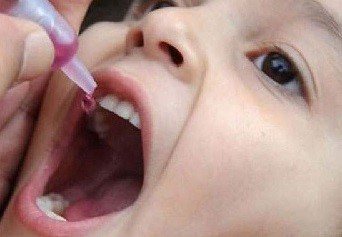
Pontine form
In potninous poliomyelitis, the nucleus of the facial nerve is severely affected. There is asymmetry of the face, a lag in the corner of the mouth, facial expressions are greatly distorted, the eyelids do not close completely, and the nasolabial fold is smooth. This form of polio differs from others in that children do not experience lacrimation and hyperacusis, and taste sensitivity does not disappear.
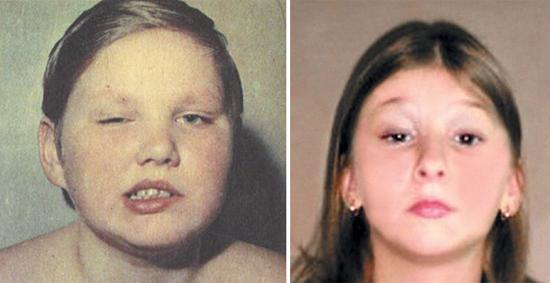
Prevention
Nonspecific is aimed at general strengthening of the body, increasing its resistance to various infectious agents (hardening, proper nutrition, timely sanitation of chronic foci of infection, regular physical activity, optimization of the sleep-wake cycle, etc.), combating insects that are carriers of pathogenic microorganisms ( various types of disinfestation), compliance with personal hygiene rules (primarily washing hands after going outside and after visiting the toilet), careful processing of vegetables, fruits and other products before eating them.
To prevent the development of polio, vaccination is used, which is carried out using live attenuated viruses - they cannot cause the development of the disease, but cause a specific immune response of the body with the formation of long-term stable immunity. For this purpose, in most countries of the world, anti-polio vaccination is included in the compulsory vaccination calendar. Modern vaccines are polyvalent - they contain all 3 serological groups of the polio virus.
Poliomyelitis is a very rare infection today due to the use of vaccination. Despite this, isolated cases of the disease are still being recorded on the planet. Therefore, knowledge of the main symptoms and methods of prevention is simply necessary. Forewarned is forearmed!
Prognosis and prevention
Polio cannot be cured, but it can be prevented. The only way is vaccination with mandatory compliance with the requirements for preventive vaccinations.
Vaccination against polio is included in the national compulsory vaccination calendar in Russia. It is carried out preorally in several stages. The first vaccination is carried out at 3 months, the second at 4.5 months with an inactivated (thermally killed) vaccine, at 6 months (third vaccination) with a live vaccine. Revaccination is also carried out in several stages: the first at 18 months, the second at 20 months, the third at 14 years (live vaccine). Proper vaccination and revaccination in a timely manner can protect a child for life.


